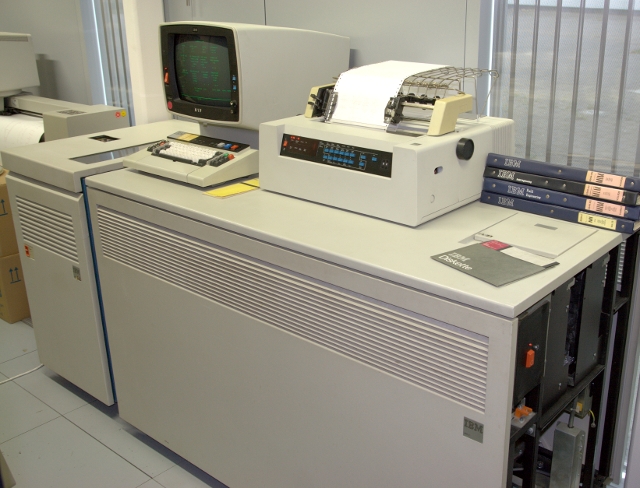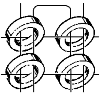IBM 4331

| Manufacturer: | International Business Machines |
| Type: | 4331 Model 2 |
| Year: | 1980 |
| Technology: | TTL, LSI |
| Price: | a nice huge sum... |
| (only the memory expansion from 1MB to 4MB did cost | |
| 270,000 Marks - over 70,000 Dollars!) |
Our first real mainframe - although it has a rather small footprint for that designation. Thanks to the IBM museum in Sindelfingen ("Haus zur Geschichte der IBM Datenverarbeitung") and to our generous Infos association we could arrange the shipping of the system with the help of a transportation company (consider that only the CPU weighs over 600kg). Many thanks also go to the donnor of the system, Mr. Willi Kuhn.
The IBM 4331 was presented to the public in 1979; the computer is fully compatible to the System/360 and System/370 and aims primarily at end users. Due to the higher intergration possible with LSI components, all necessary components for the processor, control units for several disk and tape drives, printers, display terminals and power supplies could be integrated into the CPU cabinet. Furthermore the processing speed was higher than that of the entry level models of the 370 series; therefore this computer was also specially aimed at users who wanted to upgrade their system. The operating system was basically DOS/VSE whose origins lie in DOS/360 from 1966 (for the System/360 series).
As external storage of this particular system, there is a 8809 tape drive with 1600bpi (left of the CPU), a 3340 (2x 70MB) and a 3344 (2x 280MB) disk drive. Output is done on a 3262 line printer that uses a fast rotating steel band with the print types. The console for controlling the computer is a 3278 terminal - lovingly called "ET head terminal" because of its appearance - along with a 3287 matrix printer. More terminals can be attached for the users accordingly.
After power-on the CPU isn't ready yet since the microcode (the program that implements the instructions of the CPU) has to be loaded first. This task is taken by a so-called support processor that loads its own program from the built-in 8" floppy drive. It then executes several machine tests and then loads the requested microcode into the CPU. The support processor continues to run in parallel to the main CPU and monitors the power supplies and temperature sensors amongst other things.
